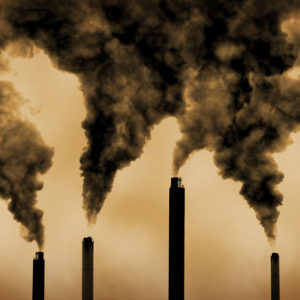A massive expansion of federal air emission rules is on hold while legal challenges wind through the courts, which the Supreme Court said it expects to be successful.
The ruling slams the breaks on the Environmental Protection Agency’s “Good Neighbor” rule that initially required 23 states with power plants and other industrial sources to implement stricter limits on emissions that can pollute states downwind. Before this rule, states developed individual plans to manage downwind emissions. Still, the EPA rejected them in favor of a national plan criticized as federal overreach.
As with nearly every EPA rule, the legal challenges came quickly, and three states — Indiana, Ohio and West Virginia — asked that the rule be paused while the legal challenges were in play.
In June, the Supreme Court ruled that the rule would be suspended. Justice Neil Gorsuch, who wrote the majority side’s ruling, said the legal challenges were likely to succeed. The celebratory statements from industries affected by the ruling came swiftly.
“No agency is permitted to operate outside of the clear bounds of the law and today, once again, the Supreme Court reminded the EPA of that fact,” said Rich Nolan, president and CEO of the National Mining Association. “With a stay in place, we look forward to making our case in the D.C. Circuit that this rule is unlawful in its excessive overreach and must be struck down to protect American workers, energy independence, the electric grid and the consumers it serves.”
Grow America’s Infrastructure Now — a broad coalition of businesses, trade associations and labor groups — accused President Biden of weaponizing the EPA to push what is said are “flawed energy policies … without regard for their legality or practical costs.”
“The Supreme Court’s decision is an important instance of reason prevailing over politics amid a broader regulatory assault on America’s fossil fuel resources,” said GAIN spokesman Craig Stevens. “The court’s determination that the EPA failed to justify its actions and exceeded its delegated powers deals a blow to the agency’s ongoing attempt to seize powers from the states. It also bodes well for pending legal challenges to other EPA rules, including the more recent ‘Carbon Rule,’ which would further undermine America’s energy security at a time when global demand for energy is skyrocking.”
Power the Future, a nonprofit organization that advocates for American energy jobs, described the rule as a backdoor path to the “Green New Deal” that many said would have bankrupted the middle class in favor of battling climate change.
“Today’s ruling demonstrates the court’s desire to reign in an administrative state overstepping its authority,” said Daniel C. Turner, the nonprofit’s founder and executive director. “If the Biden administration wants to find new interpretations of the Clean Air Act or expand the authority of the EPA, it must do so via the Congress. The American people are tired of the heavy hand of Washington, D.C., and we applaud the state attorneys general who defend their states from the abuse of power of this administration.”
Federal rules require manufacturing, chemical and other plants and industries that emit carbon dioxide, mercury and other pollutants into the air that can be carried by the wind to other states. The EPA said power-plant emissions dropped 18 percent last year in the 10 states where it enforced the finalized “Good Neighbor” rule.
In January, the EPA sought to include five more states under the rule, hoping that expanding its “Good Neighbor” program would further reduce ozone pollution and provide a national solution. Challenges to the rule noted that the agency assumed all 23 targeted states would comply, but just half of that number were participating in early 2024.
The EPA announced the finalized rule in March 2023, saying at the time that it would significantly improve public health, especially among children and older adults. The rule required power plants emitting what it deemed to be unhealthy levels of ground-level ozone — or smog — from nitrogen oxide that travels beyond state boundaries. The agency estimated that the rule would reduce this pollution by 70,000 tons from power plants and industrial facilities in 2026 and reflect a 50 percent reduction from 2021 to 2027.
The agency’s press release at the time the rule was finalized said that it would prevent 1,300 premature deaths, avoid more than 2,300 hospital and emergency room visits, cut asthma symptoms by 1.3 million cases, and avoid 430,000 school absence days and 25,000 lost work days.
States such as Wisconsin, New York and Connecticut said they have a hard time meeting federal ozone standards and reducing emissions due to power plants in other states. Judith Vale, New York’s deputy solicitor general, said that as much as 65 percent of smog pollution comes from outside its borders.
With fewer states actually participating in the rule, though, it’s unlikely those benefits would be realized, especially with no guarantee the rule would survive the legal challenges, a lawyer representing industry groups told the Supreme Court.
“The court’s decision prevents the risk of electric power outages and crippling delays to industrial supply chains for now,” said Ryan Meyers, general counsel for the American Petroleum Institute. “Americans are looking for pragmatic energy solutions, not misguided policies that threaten to undermine energy reliability by forcing operators to take pipeline engines — a vital technology to ensure natural gas can reach consumers — out of operations.”
The Supreme Court’s decision sends the case back to the Court of Appeals for the District of Columbia Circuit, which is considering one of the challenges filed by 11 states.





